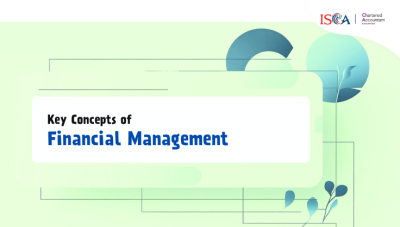
Course description
Programme Outline
Upon completion of this course, participants will be able
to:
1. Business Valuation
·
Describe what determines the value of an
organization's shares and how management can influence these values.
·
Apply various methods to value a business.
·
Describe the efficient market hypothesis.
·
State how the efficient market hypothesis
affects the valuation of an organization's share holdings
2. Working Capital Management
·
Analyse financial ratios in relation to working
capital to draw conclusions about an organisation's financial health.
·
Produce cash flow forecasts for an organisation
and explain the implications they have for funding.
·
Construct cash management policies using the
Baumol model of cash management.
3. Cost of Capital
·
Calculate the cost of each component of the Cost
of Capital including Cost of Debt, Cost of Preference Shares and Cost of
Equity.
·
Explain how Capital Asset Pricing Model and
Dividend Growth Model are used to calculate Cost of Equity.
·
Calculate the Weighted Average Cost of Capital
which will be used for appraising projects and valuing companies.
4. Investment Appraisal ( Part 1 )
·
Describe the nature of investment decisions and
the appraisal process.
·
Calculate relevant cashflows for inclusion in
investment appraisal calculations.
·
Perform and interpret investment appraisal
calculations using:
o
Net present value or NPV (including taxation and
inflation)
o
Accounting rate of return (ARR)
o
Payback Period
5. Investment Appraisal ( Part 2)
·
Calculate an optimal investment plan when faced
with capital constraints at a point in time, for both divisible (using the
profitability index) and indivisible projects.
·
Calculate the optimal replacement cycle for an
asset using net present value and equivalent annual cost.
·
Perform and interpret investment appraisal
calculations using:
o
Internal rate of return
6. Risk Management
· Describe
the nature of risk and uncertainty.
· Justify
the necessity of risk taking as part of managing an organisation.
· Explain
the dynamic nature of risk assessment.
· Explain
risk appetite and how this affects risk policy.
· Describe
management's responsibilities in relation to risk management.
· Recommend
a process for formal risk management.
· Explain
different types of Foreign currency risk.
· Apply
external hedging techniques used for foreign currency risk.
Target Audience
This course is suitable for individuals seeking foundational knowledge in Financial Management


